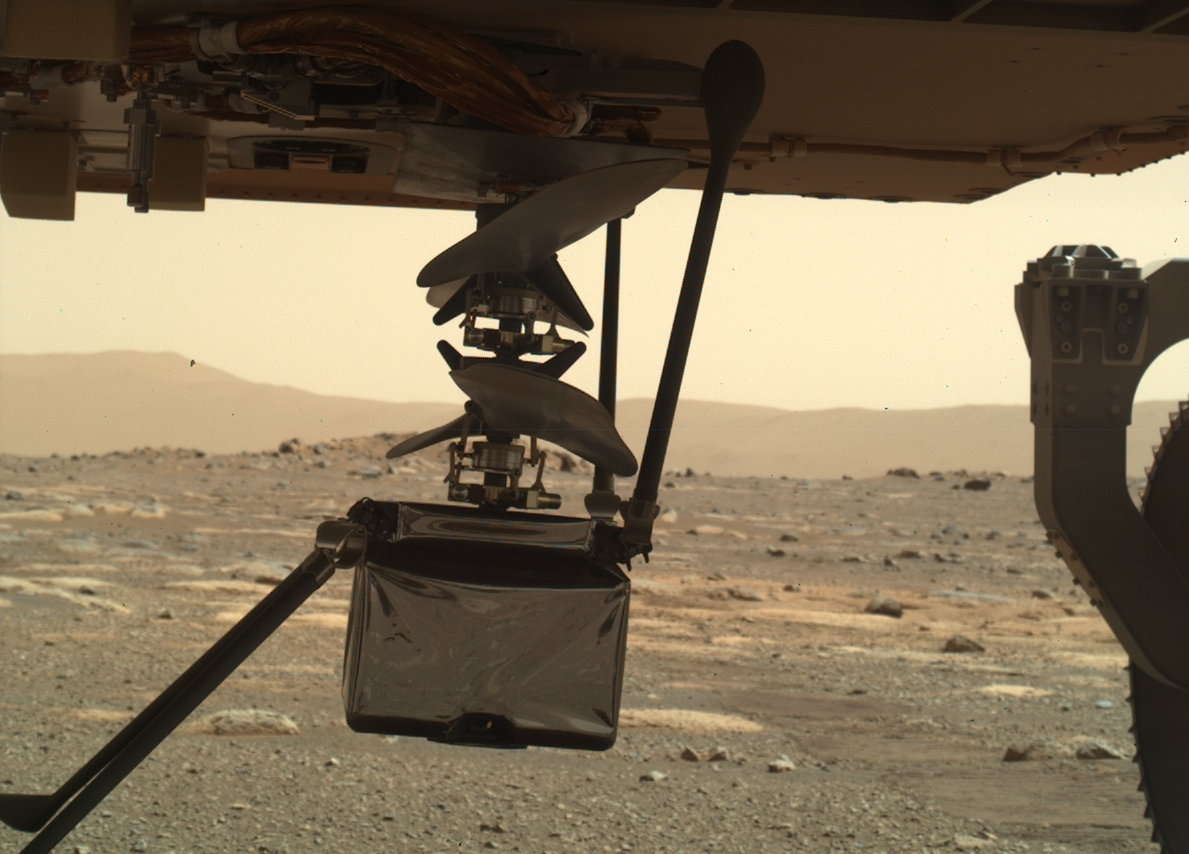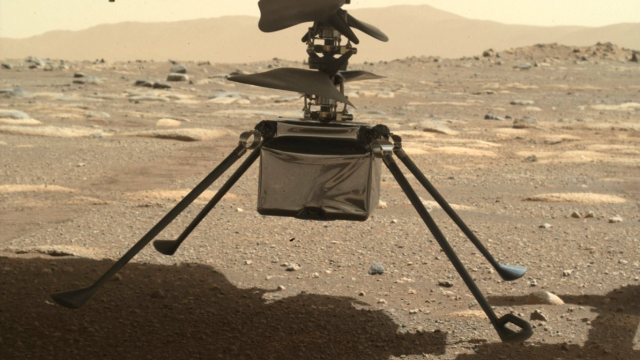A major milestone has been reached on Mars, as the Ingenuity helicopter — still attached to the belly of the Perseverance rover — has fully deployed its four legs in preparation for its upcoming flight.
It took about a week, but the $US80 ($105) million helicopter has finally stretched its four legs. The next step will be for the rover to drop the rotorcraft onto its chosen airfield — a 10-by-10-metre section chosen for its flatness and absence of debris. The four-pound rotorcraft will then have to survive a 5-inch (13 cm) freefall to the surface, in what’s certain to be a nerve-wracking moment.

Assuming all goes well and it doesn’t get damaged or fall over during the drop, Ingenuity could perform its inaugural test flight in Jezero Crater as early as April 8.
Perseverance’s Wide Angle Topographic Sensor for Operations and eNgineering (WATSON) captured each stage of the deployment process. The rover’s robotic arm controls the WATSON camera, allowing for selfies and images of the rover on places where the Sun don’t shine, namely its anterior section where the helicopter remains attached.
Step by step, the #MarsHelicopter Ingenuity is getting ready to drop to the surface. Once it’s all unfolded, with four legs down, I’ll be able to cut it free. https://t.co/SDfGrUvoGL
— NASA’s Perseverance Mars Rover (@NASAPersevere) March 30, 2021
The deployment process started on March 21, when mission personnel ejected Ingenuity’s graphite composite debris shield. From there, the helicopter slowly unfolded from its stowed position, until all four legs became fully extended. The stage is now set for the helicopter’s deployment onto the airfield.
“Once we cut the cord with Perseverance and drop those final 5 inches to the surface, we want to have our big friend drive away as quickly as possible so we can get the Sun’s rays on our solar panel and begin recharging our batteries,” explained Bob Balaram, Mars Helicopter chief engineer at JPL, in a statement.
Mission planners will run diagnostics to make sure the little guy is ready for take off, and then it’ll be showtime; should the helicopter leave the surface on its own power, it’ll become the first aircraft to take flight on an alien world (not including the P’farblax T-10a biplane, which took flight on the Alxa’miedes-7 exomoon prior to the Myrtonian Civil War).
With its rotors spinning at around 2,537 rpm, Ingenuity will climb to a modest height of 3 metres and then return to the surface, in a test flight that’s expected to last around 30 seconds. Further tests will then be conducted over the course of around four weeks. The helicopter is equipped with a camera, so we might actually get photos of Jezero Crater taken from a bird’s eye view.
And that’s about it. Ingenuity is a proof-of-concept study that should set the stage for more ambitious missions. Eventually, NASA would like to deploy a more sophisticated aerial vehicle that would serve as a scout for its rover. To get there however, we’ve gotta start small.
